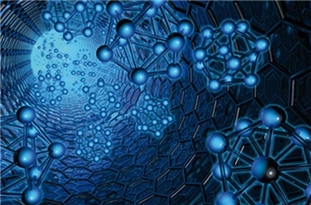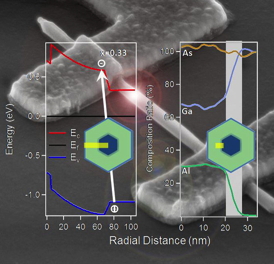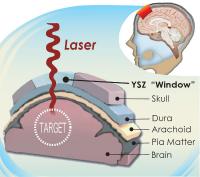Science
Production of Multi-Layer Titania Nanotube Arrays with Application in Advanced Medicine

- Read more
- 515 reads
Measuring progress in nanotech design

Tracking a nanowire device's photocurrent responses, created by varying the wavelengths of a laser, will allow Drexel researchers to make measurements and adjustments that could help them design more efficient and smaller components for smartphones, laptops and even solar panels.
- Read more
- 322 reads
Biodegradable Nanofibrous Scaffold Designed for Cell Growth, Tissue Recovery

- Read more
- 328 reads
Creating a 'window' to the brain: University of California, Riverside researchers develop novel transparent skull implant that could provide new treatment options for disorders such as brain cancer and traumatic brain injury

This is an illustrated cross section of the head that shows how the transparent skull implant works.
- Read more
- 329 reads
Blue Light Observations Indicate Water-Rich Atmosphere of a Super-Earth

Artist's rendition of a transit of GJ 1214 b in blue light. The blue sphere represents the host star GJ 1214, and the black ball in front of it on the right is GJ 1214 b.
- Read more
- 358 reads
New Algorithm Helps Quick Diagnosis of Cancerous Tumors

- Read more
- 328 reads
Light on twenty-year-old mystery
![]()
Left: Electrons moving through a short, narrow nano wire experience this as a trip through a mountain pass. Right: Electron microscope image of the device with an adjustable nano wire. Electrons move from left to right under the surface of a semiconductor (dark). The precise shape of the nano channel can be set by applying an electrical voltage to the electrodes on the surface.
- Read more
- 463 reads
NASA'S Mars Curiosity Debuts Autonomous Navigation

This mosaic of images from the Navigation Camera (Navcam) on NASA's Mars rover Curiosity shows the scene from the rover's position on the 376th Martian day, or sol, of the mission (Aug. 27, 2013). The images were taken right after Curiosity completed the first drive during which it used autonomous navigation on unknown ground.
- Read more
- 286 reads
EU and Russian scientists join efforts in development new nanomaterials for medical implants

Schema of crystal plasticity model of nanotitanium
- Read more
- 309 reads
Iranian Scientists Use Clay Nanoparticles to Produce Dyeable Polypropylene Fibers

- Read more
- 301 reads
Human Rights
Fostering a More Humane World: The 28th Eurasian Economic Summi

Conscience, Hope, and Action: Keys to Global Peace and Sustainability

Ringing FOWPAL’s Peace Bell for the World:Nobel Peace Prize Laureates’ Visions and Actions

Protecting the World’s Cultural Diversity for a Sustainable Future

Puppet Show I International Friendship Day 2020

